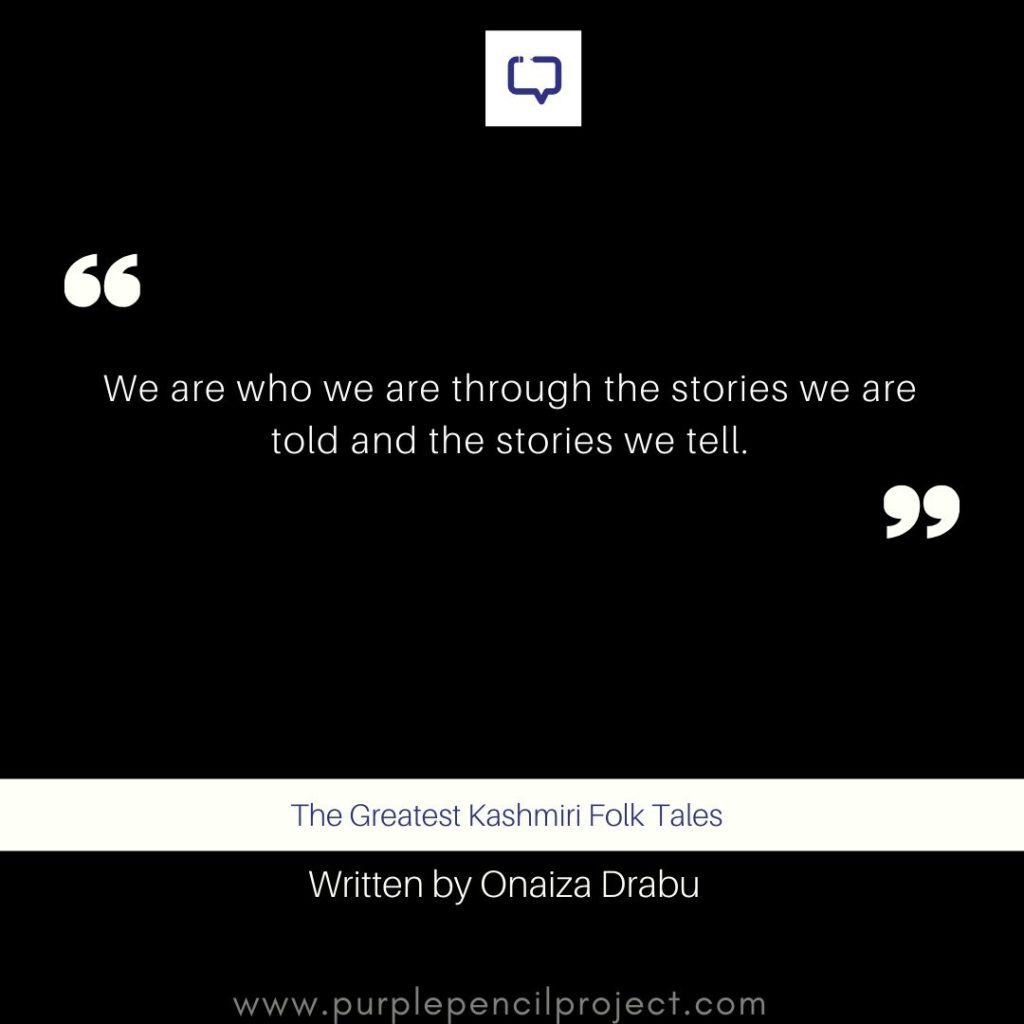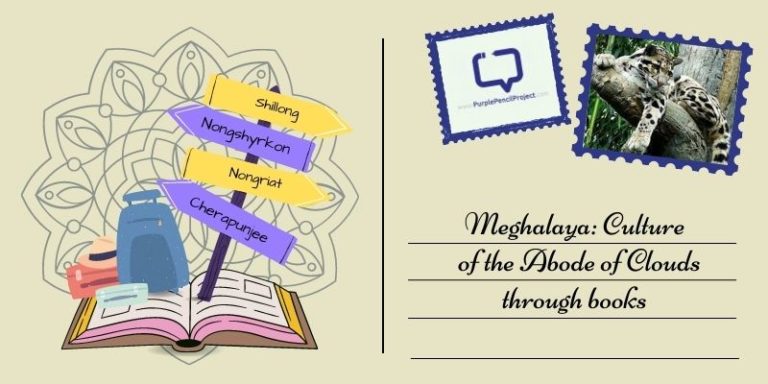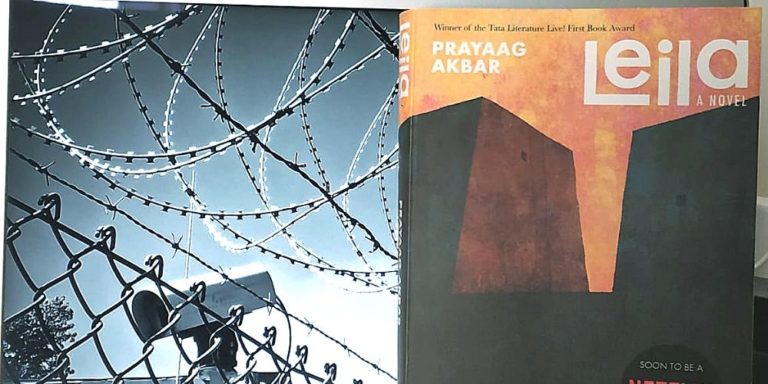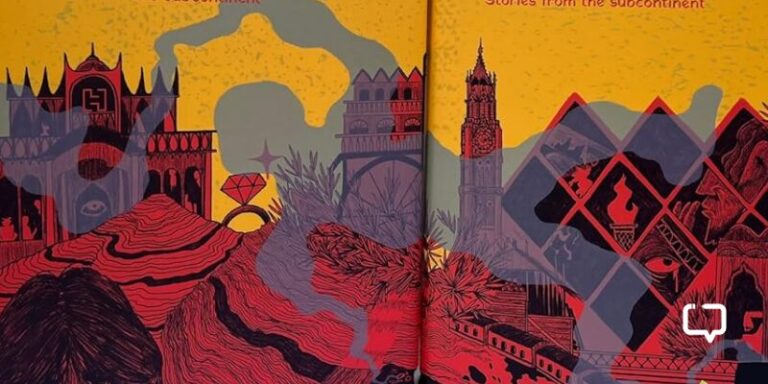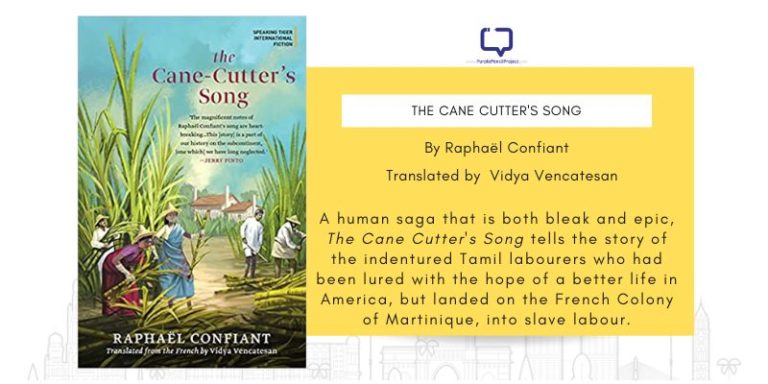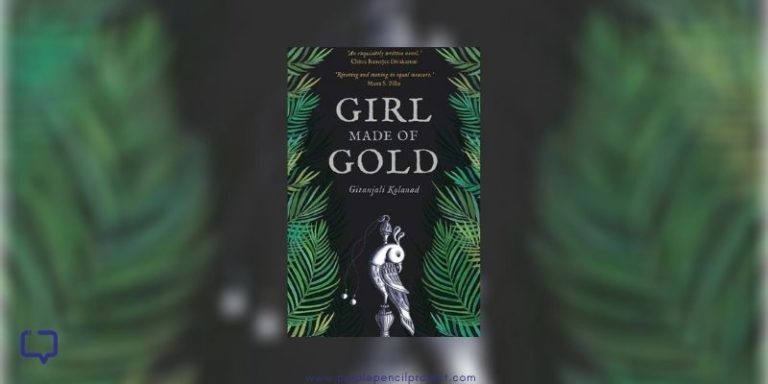Remember when we passed our evenings lying on Grandma’s lap, listening to the tales from Panchatantra? Grandpa’s animated voice as he would try to mimic one of the characters from Katha Sarit Sagar? Those invaluable moments spent with our parents and grandparents, listening to them bring the stories to live in front of us, has, in some way or the other, shaped the identity and personality of each one of us. The aim of Onaiza Drabu in The Legend of Himal and Nagrai: Greatest Kashmiri Folk Tales is precisely to evoke nostalgia for our childhood and somehow rekindle the child that lies asleep deep within each one of us.
We encourage you to buy books from a local bookstore. If that is not possible, please use the links on the page and support us. Thank you.
In Brief
Kashmiri Folktales is divided into three parts, displaying a wide variety – stories from pataal or the underworld, stories from janawar or animal stories, and stories from zameen, or the earth.
While ‘Aftab, Zoon, Hawa’ show how the Sun, Wind and Moon came to be, Westerwan and Gasherbram beautifully spin a story of two mountain ranges falling in love.
Many times, while reading some of the stories, for instance, ‘Aftan, Zoon, Hawa’ or ‘The Legend of Himal and Nagrai’, the tone of the narration, like a grandfather narrating a bedtime story to his grandchild, is bound to take the reader back to his childhood.
Many tales also have morals attached – ‘Shishrum Nag and His Daughter’s Broom’ reinforces the concept of destiny, saying, “all that is written shall come to pass”, ‘Shikaslad’ personifies luck, show that people don’t notice when fortune comes knocking at the door.
A Sense of Home
This book is retold in the hope that it contributes to more than a nostalgic sense of home…
Folk tales have been a vital part of most people’s childhoods. Kashmiri Folk Tales recreate that place of emotional and physical security we came to associate with bedtime stories. Just like the reader, Drabu also looks back at her childhood saying::
“Every time my grandmother picked a morsel of food for me, moistening the rice with the gravy of the mildly spiced meat, I recall it being tastier with the stories that she told. The taste of mildly spiced meat is for me the taste of Himal Nagrai’s adventures, the taste of Gager and Gagur’s khichdi…”
The reader is compelled to agree with her.
The Kashmiri Identity
We are who we are through the stories we are told and the stories we tell.
Drabu correctly mentions in her introduction to Kashmiri Folk Tales that ever since the instability in the Kashmir region and the blockade of communication, it has become all the more important to keep Kashmir and its people alive through folk tales. After all, people’s identity is shaped, in some way or the other, through the stories heard and transmitted.
Kashmiri Folk Tales strives to remind its reader of the identity of Kashmir, which today stands cut off from the world, both literally and metaphorically. It also attempts to remind Kashmiris about the rich cultural heritage that they are heirs to, and bring back the history of the land.
The book comprises tales that explain how various topographies came to exist in Kashmir. In this regard, stories like ‘Westerwan and Gasherbram’, and ‘Kashyap Marg’ are of immense interest not only to Kashmiris but to everyone reading these tales. It is fascinating, to explore the water spring guarding the legend of Himal and Nagrai, or to witness a Kashmiri celebration, with rice and meat, as narrated in ‘Akanandun’.
Moreover, while translating the tales into English, Drabu has left some Kashmiri words as they were. Words like ‘Ama’, Dapaan’ and phrases like Wanan Wael Chi Wanan, which add an authentic flavour to this dish, preserving its cultural authenticity. Every reader, Kashmiri or not, is gracefully welcomed to the world of Kashmiri stories and fables.
Final Verdict: There are two things that really distinguish The Legend of Himal and Nagrai: Greatest Kashmiri Folk Tales from other such collections. First, the book attempts to tell us that folk tales aren’t only for children – it is a means to remind oneself of who one is and hold on to a particular identity. They not only evoke nostalgia for the past but also remind us of the culture we are so rooted.
Second, while the book holds a special charm for its Kashmiri readers, it also speaks to readers from across the globe, attempting to bind us all with the fine thread of fables and stories. It is definitely a must-read!
Favourite Quote
